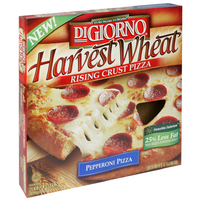I recently bought a 4 pack of Strawberry Banana
Mashups for my son. These 100% fruit pouches are created by
Revolution Foods, and I feel pretty good about buying them. When you buy any Revolution Foods product, 3% of your purchase goes into their school lunch program which delivers fresh meals to under-served schools. The packaging is definitely cute, and caught my eye but when inspecting closer I had a few questions about what all the logos and the text meant. So, since I want to know about EVERYTHING...I decided to do my research...
Sorry, I'll try to keep it brief. But if you know laws at all, the wording is NEVER ever simple and brief. If you see the logo or text for
SB12 California school compliant on anything you buy it refers to
Food Services: Education Code §49431 (Senate Bill 12, 2005). This bill requires all foods sold outside of the school meal program to students on school grounds at each elementary school to be approved for compliance with the nutrition standards (effective 2007).
Foods that may be sold outside of the school meal program to pupils on school campus during the school day are full meals. Individually sold dairy or whole grain food containing not more than 35 percent of calories from fat, 10 percent of calories from saturated fat, 35 percent sugar by weight, and no more than 175 calories per item. Also, Elementary schools may permit the sale of foods that are not in compliance with the standards as part of a fundraising event when the items are sold by students off of school premises or at least 30 minutes after the end of the school day.
Here are a few others marketing terms that you'll often see, in which the American Dietetic Association deciphers their meanings:
Natural
According to the Mintel Global New Products Database, “natural” claims were the most common on food and beverage launches in 2008. What does natural mean? Neither the Food and Drug Administration nor the U.S. Department of Agriculture has formally defined it. The FDA holds to its 1993 policy: [FDA] has not objected to the use of the term on food labels provided it is used in a manner that is truthful and not misleading and the product does not contain added color, artificial flavors or synthetic substances. Use of the term “natural” is not permitted in a product’s ingredient list, with the exception of the phrase “natural flavorings.” The USDA is currently defining the conditions under which it will permit ‘natural’ to be used in meat and poultry product labeling, but a final rule may not appear until late 2010.
Processed and unprocessed
“These terms are frequently misunderstood,” Johnson says. Many people think of “processed” as unhealthy packaged foods with empty calories and loads of additives, and ‘unprocessed’ as foods that are not canned, frozen or packaged. Neither of these beliefs is entirely correct.
According to a 2008 federal law, “processed” refers to food that has undergone a “change of character.” Examples include raw nuts (unprocessed) vs. roasted nuts (processed); edamame (unprocessed) vs. tofu (processed); a head of spinach (unprocessed) vs. cut, pre-washed spinach (processed).
Local
“The local food movement refers to buying food that is grown close to where you live,” says Johnson. This movement is connected to a broader philosophy of environmental sustainability and supporting the local economy. ”Still, even ‘local’ can have a variety of nuances depending upon who you ask,” says Johnson. The term “locovore” is used to describe someone who eats food grown or produced locally.
Whole
“There is no regulatory definition of whole foods,” says Johnson, “but it’s a term consumers hear often.” “Whole foods” generally refer to foods that are not processed or refined and do not have any added ingredients. By most definitions, whole foods include fresh produce, dairy, whole grains, meat and fish; meaning any food that appears in its most pure form with minimal processing.
Organic
Of all these terms, “organic” has the most specific criteria and legal meaning. As defined by the USDA, organic meat, poultry, eggs and dairy products come from animals that are given no antibiotics or growth hormones. Organic plant foods are produced without using most conventional pesticides, fertilizers made with synthetic ingredients or sewage sludge, bioengineering or ionizing radiation. A government-approved certifier must inspect the farm to ensure these standards are met. In addition to organic farming, there are USDA standards for organic handling and processing.
There are three levels of organic claims for food:
- 100-percent Organic. Products that are completely organic or made of only organic ingredients qualify for this claim and a USDA Organic seal.
- Organic. Products in which at least 95 percent of its ingredients are organic qualify for this claim and a USDA Organic seal.
- Made with Organic Ingredients. These are food products in which at least 70 percent of ingredients are certified organic. The USDA organic seal cannot be used but “made with organic ingredients” may appear on its packaging.
In general, I think marketers emphasize all the good reasons why a consumer would want to buy their product by highlighting the fact that it's organic, or 100% whole wheat etc. Revolution foods prides themselves in packaging snacks that are:
1. Free of Trans Fats
2. Contain no high fructose corn syrup
3. Have no artificial ingredients
haha, sure it's a good source of calcium..anything served with milk could claim that!
Sometimes, though...like in the case of some breakfast cereals the packaging may be deceptive. Sure that box of cereal with the character that your kids love says 8g of fiber per serving on it, but it fails to mention that it also includes 23 g of sugar as well! California, by far has the strictest laws-regulations-and permits for food. If you're a seller of food it's hell, but if you're a consumer you should rest easy in the fact that the industry is so highly regulated.


















































